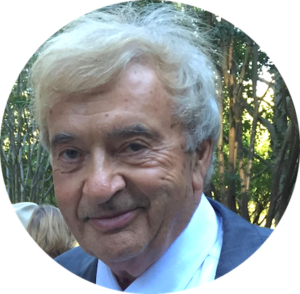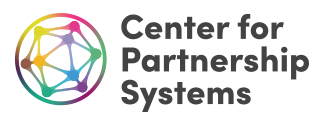March 18, 2021
By Bob McQueen, PhD
 In our daily lives we have purposes we wish to achieve which are large and small. We have individual purposes and purposes we seek to achieve with others. Whether the purpose is small, like planning a birthday party, or huge, like putting an astronaut on the moon, there needs to be a plan for achieving the purpose. Sometimes the plan is detailed and sometimes it is poorly defined, and the details are more clearly defined on the pathway. The degree of partnership and concurrence in developing and adjusting the plan is a key factor in the success of achieving the purpose and the satisfaction of the partners in achieving the purpose.
In our daily lives we have purposes we wish to achieve which are large and small. We have individual purposes and purposes we seek to achieve with others. Whether the purpose is small, like planning a birthday party, or huge, like putting an astronaut on the moon, there needs to be a plan for achieving the purpose. Sometimes the plan is detailed and sometimes it is poorly defined, and the details are more clearly defined on the pathway. The degree of partnership and concurrence in developing and adjusting the plan is a key factor in the success of achieving the purpose and the satisfaction of the partners in achieving the purpose.
There are so many versions in religions and philosophy of the Golden Rule. Examples are ?do unto others as you would have them do unto you? and ?love your neighbor as yourself?. Partnering not only involves achieving an outer purpose but undertaking the achievement of it with love for each other. The Golden Rule is a guide to building heaven on earth and I suggest that as we partner together to achieve a shared purpose we have an opportunity to experience a fragment of heaven on earth.
One definition of cosmogenesis is the growth of order in the universe. From the Big Bang to the genesis of life on earth there has been an evolutionary partnering of the particles of matter into higher levels of order. We are glad that hydrogen and oxygen got together to form water. Science has clearly indicated that evolution involves the survival of the fittest. It is not a stretch to apply this view to organizations that compete in the marketplace and conclude that the survival of the fittest depends upon the level of partnership between its members. Also, that improving the level of partnership within the organization involves learning individually and collectively.
Partnership is not only a pathway to survival and prosperity but it is also a fundamental building block of human evolution that will enable us to leave the world better than we found it.
A wildly accepted fundamental purpose of humankind is to leave a better world for future generations. Improving partnership is not only a pathway to survival and prosperity but it is also a fundamental building block of human evolution that will enable us to leave the world better than we found it.
The grist in the mill of learning is not experiencing harmony but rather recognizing when there is disharmony and seizing the opportunity to resolve disharmony in a way in which we respect and seek to understand our differences, i.e., do unto others as we would have them do to ourselves and partner together to identify a solution (learn) that better helps us to achieve our common purpose.
Education today focuses on gaining knowledge, skills and experience developed by others. It lacks an equal focus on helping us learn how to draw on on our inner wisdom in resolving disharmony. I believe that organizations that prosper will find ways to foster the creative capability of their members as well as their knowledge and skills.
A well-known quotation is ?There are none so blind as those that cannot see.?
A helpful way of recognizing the ability to see the presence of the creative spirit in the world, the creative force that helps us learn how to be better partners, is to recognize the many art forms that we cherish. The creative force is something that moves through us and we give form to in the world, for example, art and music. Many years ago I read a book entitled Jonathan Livingston Seagull and I learned that the author, Richard Bach, had a creative vision of the whole book instantly in his head and then he wrote it down. Art created by people such as Mozart, Picasso and Leonardo da Vinci still enrich our spirits today.
I encourage all of us to see the importance of enhancing our ability to perceive our creative insights in addressing disharmony as we partner with others to achieve our shared purpose. Our culture has emphasized the importance of our mental and analytical skills in addressing challenges we face when we partner together to achieve our shared purpose. However, we are increasingly recognizing the duality of our decision-making processes, that in addition to our mental perspective we are able to hear our creative inner wisdom in identifying the most effective way to resolve the challenges we face. Learning involves drawing on our mental knowledge and professional skills and also our creative inner wisdom. Our ability to hear and recognize our creative inner wisdom is a key to learning as spiritual beings and resolving disharmony we identify as we partner together in achieving our shared purpose.
An important call to action for those who are seeking to enhance partnership and enable organizational development and learning is to find ways in our culture that help people learn how to hear and listen to and trust their inner wisdom in making choices in their organizational and daily lives.
The universe is vast, and we are only starting to understand the magic of the whole of which we are a part.
Photo by Wilmy van Ulft on Unsplash
Bob McQueen, PhD teaches Management and Organizational Learning at San Jose State University College of Engineering. He has over 40 years experience as an Engineering Manager with GE, and he is a partner in Organizational Learning Center, San Jose, California. He teaches graduate courses internally at Silicon Valley high-tech companies and overseas including Operations Management at Peking University. Contact Bob at bobmcqueen@hotmail.com



Leave a Reply